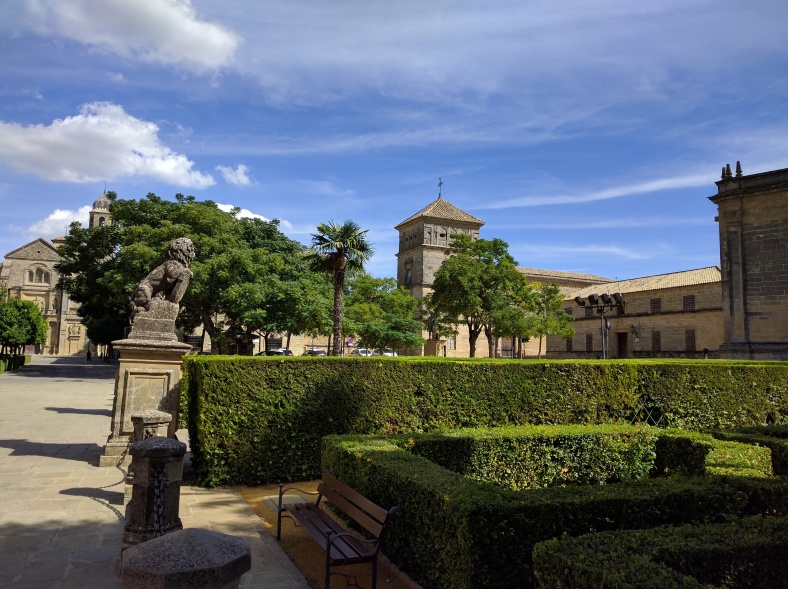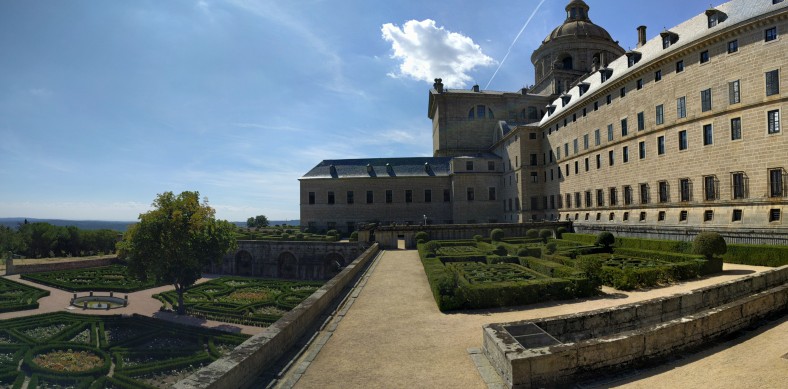Since I started my last entry by drawing reference from a video game, I’ll continue the tradition. This time, I want to talk about another game series by Paradox (hmmm there seems to be a trend here) called Europa Universalis. It’s rare for a video game to have an apparent central theme or thesis, but I always felt like EU had one – namely, the sheer futility of trying to control all of Europe. While other grand strategy series like Civilization and Total War enable the human desire to grow and dominate to an unrealistic extent (which is not to say that I don’t enjoy them), EU has always exemplified the saying “mo’ money mo’ problems” in all its aspects. Here, being bigger just meant having to deal with more hostility from without and insurrections from within, while the most carefully laid out political schemes can be toppled by untimely deaths and sheer happenstance.

Plaza Vázquez in Úbeda
Spain learned this lesson firsthand starting from the 16th century. One could hardly say that the then nascent empire was not favored to become the new European hegemon – champion of the faith, with most of the Americas as its treasury, and territories as far reaching and strategically vital as Sicily, Naples, and the Spanish Netherlands. “God is Spanish,” declares Gaspar de Guzmán, as he marshals his forces into Germany, Italy, and France. Of course, his own downfall came about not much later, and by the time of the War of Spanish Succession, Spain had become almost devoid of agency, a mere morsel to be divided among the dynastic powers of Vienna, Paris, and London, never again to become the central focus of international politics.

The palace complex of San Lorenzo de el Escorial
So how did all this come about? How did a kingdom whose supply of New World silver was nearly endless end up declaring bankruptcy continuously? How did Spain repeatedly come within an inch of becoming the first global superpower, only to be thwarted each time? These are the questions I brought with me as the first leg of my journey ended, I departed Andalusia, and the Spain of the Reconquista unfolded into the Spain of the High Renaissance, of the Age of Sail, and of the Spanish Golden Age. I knew what I was looking for was not some singular event like when the armada was broken at the isles, what I was looking for was a pattern, an overarching plot.

Monastery of San Juan de los Reyes, Toledo
What I found were the soaring rooftops of Toledo, and I was wowed. I found the gilded chambers of the royal palace of Madrid, and I was stunned. I was blown away by the elegant hallways of El Escorial, made speechless by the towering heights of its royal chapel… the sights to be found just in Madrid alone would take a lifetime to explore. The same can be said for a few other places – Rome, perhaps, but that has millenia of utmost historical signifiance as opposed to a mere 500. Whereas there is but one Versailles in France, it seems no city in Spain is complete without its own palace complex. Therein, I think, lies the problem. You must understand that these things were not constructed separately – their origins can all be traced to that same time period at the height of the golden age. I’m not saying that building a few extra palaces bankrupted Spain, but it betrays a mentality that poisoned the actions of the Spanish rulers – a grandiosity that cannot be sated, reaching too far and aspiring to too much. This was a Spain that tried to do everything at once: to subjugate Italy, to encircle France, to contest the Holy Roman Empire, and economically dominate the Maritime Powers. Meanwhile to assert religious authority she had to fight the Ottomans. All this required gold, and so the American colonies, still in need of pacification, were instead brutally exploited. At the same time, religious divide lingering from the Reconquista was still present, thus the inquisition was born to persecute and control the populace. All this, I think, are symptoms of a monster that consumed too much and grew too fast, only to eventually have to spit it all back out again.

Foyer of the Royal Palace in Madrid. This is the only room where pictures were allowed but I can attest that every other one matched or exceeded it in splendor.
Ultimately, perhaps the follies of the Spanish Empire were such because she was the first to have a real opportunity at true global domination. We will see that those who came after, such as the British, employed much more subtle strategies. This is perhaps why the Victorian Golden Age left seemingly more legacies around the world than the ephemeral Spanish one. Alas, that is also why El Escorial is not to be found in England.
My Route:
